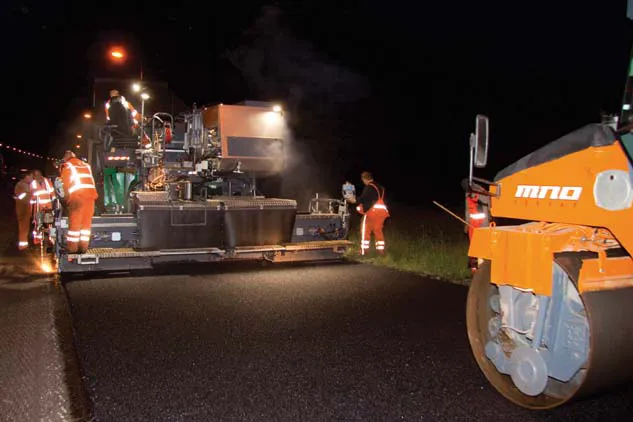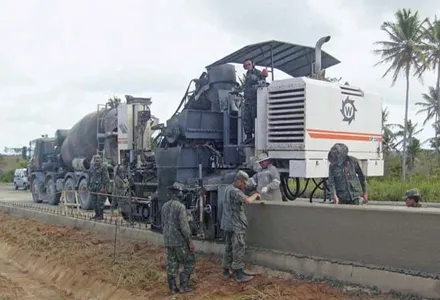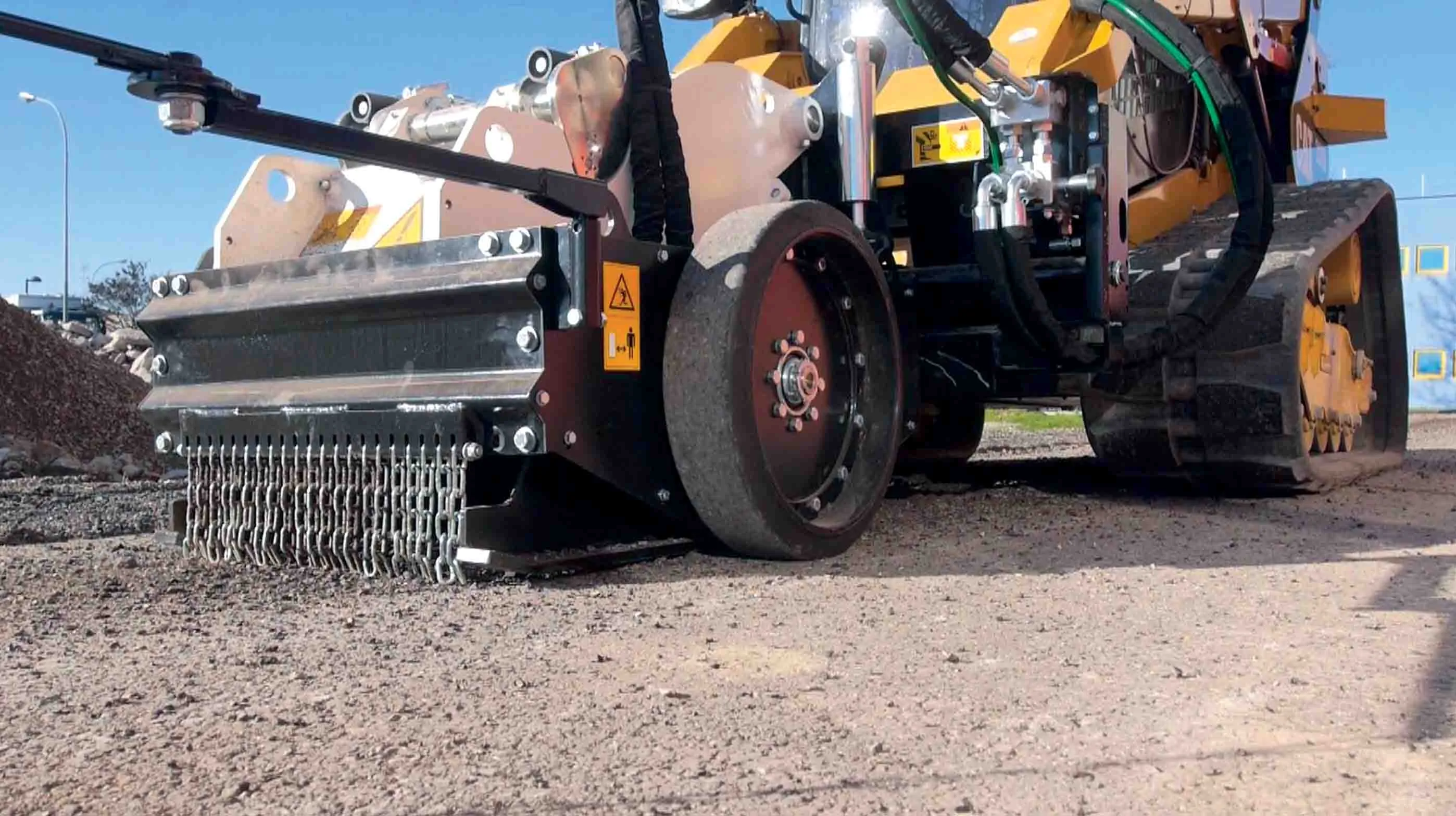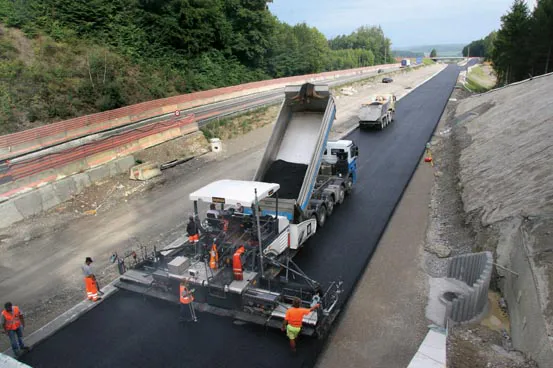A high speed highway rehabilitation has seen the repaving of a 1.5km stretch of road in just two night shifts. A Vögele SUPER 1800-2 paver fitted with one of the firm's SprayJet modules helped boost productivity and cut operating costs for Dutch contractor MNO Vervat.
February 29, 2012
Read time: 3 mins

A high speed highway rehabilitation has seen the repaving of a 1.5km stretch of road in just two night shifts. A 1194 Vögele SUPER 1800-2 paver fitted with one of the firm's SprayJet modules helped boost productivity and cut operating costs for Dutch contractor 1642 MNO Vervat. The contract was the first time that the paving team had used its new Vögele SUPER 1800-2 with SprayJet Module in the Netherlands and has been used on a highway upgrade on the A6 near Amsterdam. The team quickly learned the operation of the machine and as surface upgrade was to be carried out by a thin overlay paved on spray seal, hot on hot, the paver applied emulsion and laid asphalt in one pass.
The A6 stretches from Amsterdam to Heerenveen in the north of the country and the surface course needed replacing for a 1.5km section to the north of Amsterdam. The first step involved milling off 20mm of the old surface between the Almeerderzand and Almere-Stad-West junctions using a2395 Wirtgen planer fitted with a fine milling drum, before the new surfacing was to be paved.
This approach was used as the contractor, MNO Vervat, had convinced the authorities that using the Microville material for a thin overlay, with spray seal, hot on hot, was an effective solution. M Zwaan of the Dutch Ministry of Transport is responsible for road construction in the Amsterdam region and explained, "We wanted a low-budget rehabilitation of the motorway section, as a longer stretch of the A6 will undergo reconstruction in about 2-3 years' time. The offer submitted for paving the thin overlay was €500,000 cheaper than for conventional methods of pavement rehabilitation."
The paving team had just two nights to lay new surface course and the three lanes being resurfaced had an overall width of 15m while around the two junctions, the maximum width was 24m. All told, 30,000m2 of asphalt pavement needed rehabilitating. For the right-hand and middle lanes, the paving team used the paver's maximum pave and spray width. And when paving in 6m width, the operating speed of the SUPER 1800-2 with SprayJet Module was a productive 12m/min.
A key advantage of the SprayJet concept system is its ability to apply emulsion and paving asphalt in a single pass, a major benefit when paving thin overlays, hot on hot.
For thin overlays, compaction is a focal issue when it comes to producing a strong and durable bond of layers and this job was handled by a team of three228 Hamm rollers. Two DV 70 OV tandem rollers compacted the surface, while MNO Vervat used a HW 90 to compact the transition areas. All three rollers operated in static mode and the final density of the 20mm overlay was achieved in just a few passes. The warranty period for the surface is five years although the contractor is convinced this will last considerably longer.
The A6 stretches from Amsterdam to Heerenveen in the north of the country and the surface course needed replacing for a 1.5km section to the north of Amsterdam. The first step involved milling off 20mm of the old surface between the Almeerderzand and Almere-Stad-West junctions using a
This approach was used as the contractor, MNO Vervat, had convinced the authorities that using the Microville material for a thin overlay, with spray seal, hot on hot, was an effective solution. M Zwaan of the Dutch Ministry of Transport is responsible for road construction in the Amsterdam region and explained, "We wanted a low-budget rehabilitation of the motorway section, as a longer stretch of the A6 will undergo reconstruction in about 2-3 years' time. The offer submitted for paving the thin overlay was €500,000 cheaper than for conventional methods of pavement rehabilitation."
The paving team had just two nights to lay new surface course and the three lanes being resurfaced had an overall width of 15m while around the two junctions, the maximum width was 24m. All told, 30,000m2 of asphalt pavement needed rehabilitating. For the right-hand and middle lanes, the paving team used the paver's maximum pave and spray width. And when paving in 6m width, the operating speed of the SUPER 1800-2 with SprayJet Module was a productive 12m/min.
A key advantage of the SprayJet concept system is its ability to apply emulsion and paving asphalt in a single pass, a major benefit when paving thin overlays, hot on hot.
For thin overlays, compaction is a focal issue when it comes to producing a strong and durable bond of layers and this job was handled by a team of three









